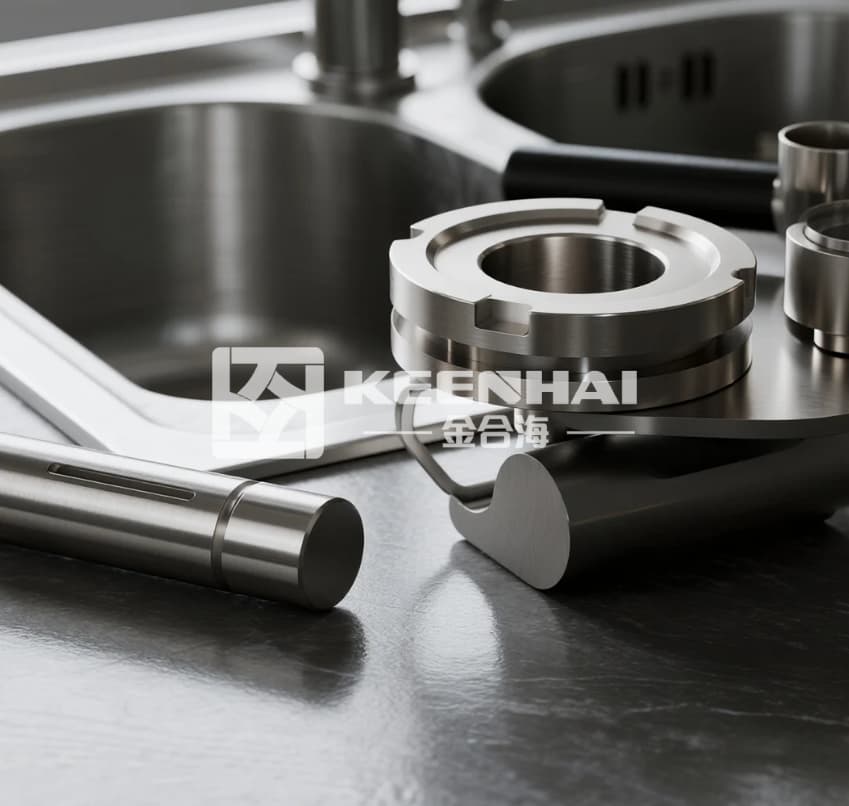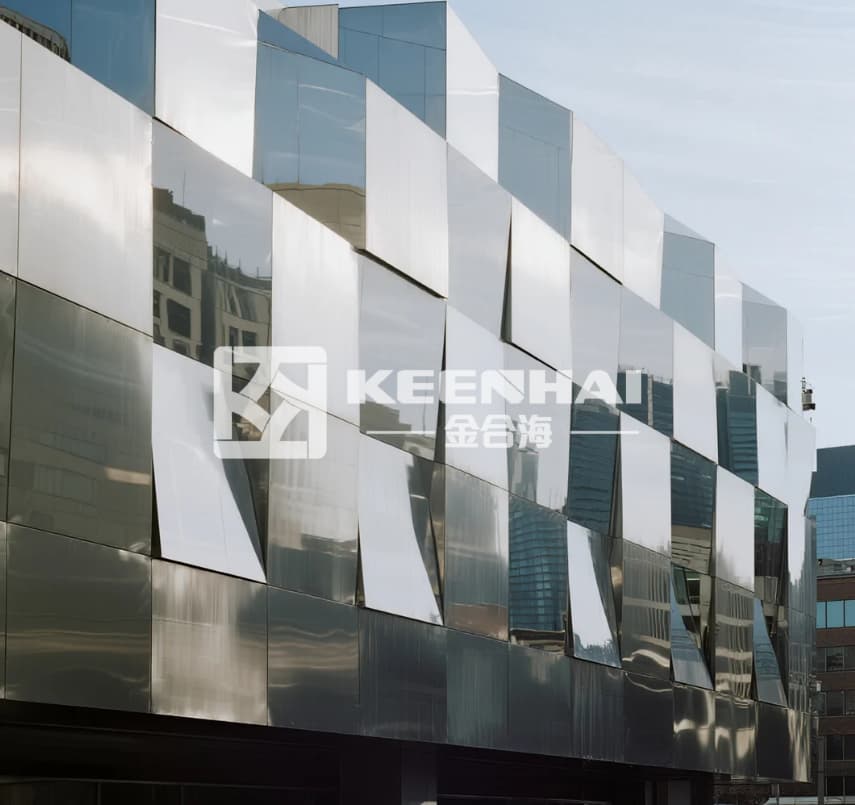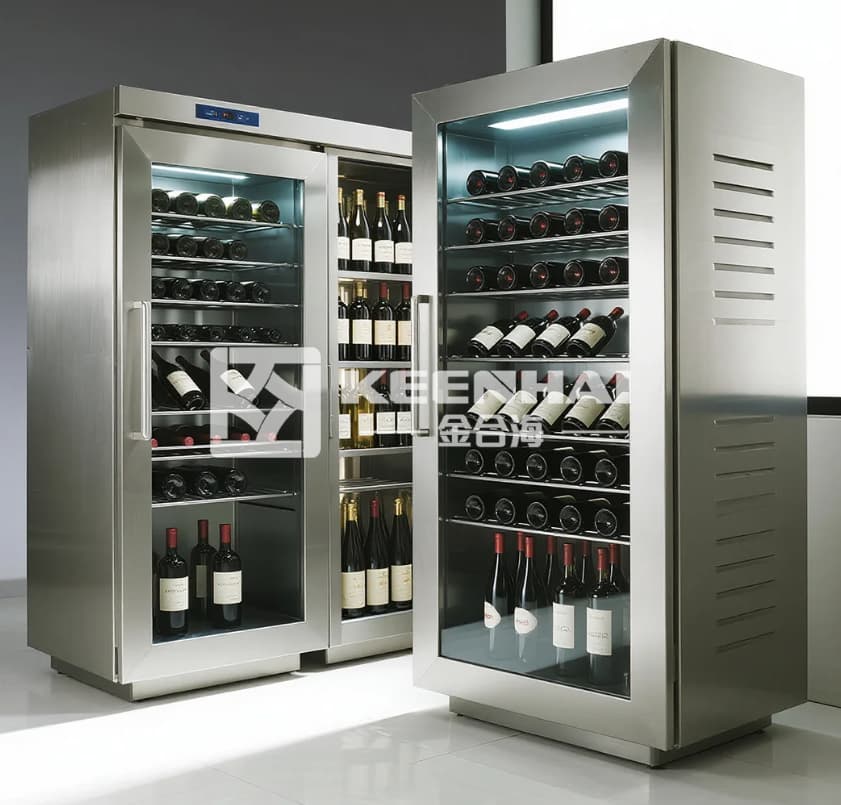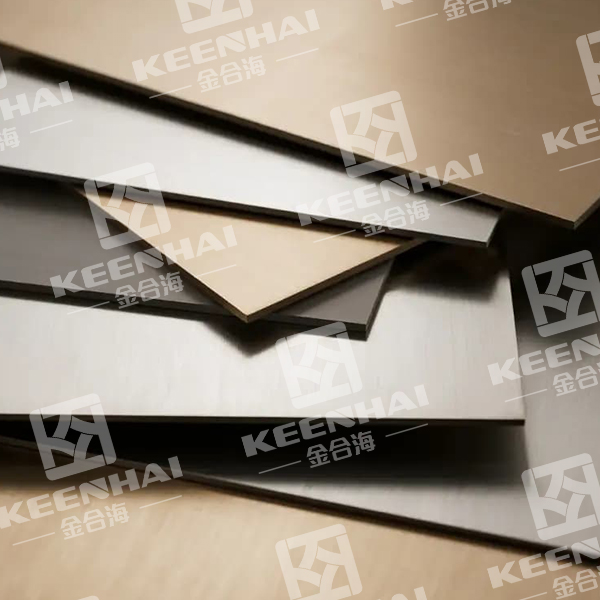Material Inox and stainless steel may seem similar, but they differ in composition, corrosion resistance, and strength. This article explains how inox’s higher chromium content makes it ideal for coastal facades and humid environments, while stainless steel grades like 304 or 316 offer versatile options for kitchens, elevators, and decorative panels. Learn which material fits your project and why.
Composition and Material Properties
1.1 Chemical Elements in Material Inox
Material inox is primarily made of iron combined with chromium, typically around 18%. The chromium forms a thin, invisible oxide film that prevents rust from spreading. Depending on the grade, nickel and molybdenum are added to boost resistance against chemicals and to enhance flexibility.
For example, in coastal hotels along the Mediterranean, inox panels are often used for outdoor staircases and balconies. The salty sea air would quickly corrode untreated metals, but the chromium balance in inox ensures that these structures remain intact for decades.
1.2 Stainless Steel Alloy Variations
When we look at different stainless steel products, three families stand out: austenitic, ferritic, and martensitic. Each type has a unique mix of elements that determine how it performs in practice.
-
Austenitic (304, 316 grades): Highly resistant to corrosion and widely used in subway stations, airports, and commercial kitchens.
-
Ferritic (430 grade): More cost-effective, commonly seen in interior trims or appliance panels.
-
Martensitic (410, 420 grades): Very hard, used for knives, tools, and industrial equipment.
Think of a brushed panel lining the walls of a busy airport terminal. That’s often 304, chosen because it resists fingerprints and stands up to thousands of daily touches. In contrast, 316 is the go-to choice for seaside promenades, where salty winds demand stronger chemical resistance.
1.3 How Composition Affects Strength and Durability
The exact mix of chromium and nickel controls how the material behaves under pressure. A stainless steel sheet with higher nickel content bends more easily without cracking, making it ideal for curved architectural designs like hotel reception counters or escalator claddings. Ferritic grades, with little to no nickel, are more rigid, so they’re often chosen for flat wall panels in indoor spaces.
For example, a financial district tower with a curved façade will usually specify an austenitic grade because it offers both durability and flexibility under wind loads. Meanwhile, a shopping mall might rely on ferritic panels for interior walls where corrosion isn’t a big concern but cost efficiency is.

Corrosion and Rust Resistance
2.1 Performance in Humid Environments
Humidity is one of the toughest tests for any metal. Regular carbon steel often develops reddish-brown rust spots within weeks if left exposed. In contrast, material inox maintains its clean surface much longer because of its chromium-rich oxide film.
Take for example high-traffic subway systems in cities like Singapore or Hong Kong. These underground stations are naturally humid, yet inox handrails and wall panels continue to look fresh year after year. The invisible protective barrier keeps moisture from penetrating deep into the material, reducing the need for frequent replacements.
2.2 Resistance to Chemicals and Stains
Beyond moisture, inox is also well-regarded for its ability to resist chemical exposure. Cleaning agents, mild acids, and even salty food spills do not easily leave marks on the surface. This is why professional kitchens and laboratories lean heavily on inox counters and sinks.
In an industrial setting, where chlorine-based cleaners are used daily, the alloy’s nickel and molybdenum additions become even more critical. They help prevent pitting corrosion, the kind that creates tiny holes in the surface. Without these elements, the lifespan of the metal would be drastically shortened.
2.3 Long-Term Surface Protection
One of the most valuable qualities of inox is its ability to preserve its appearance over decades, even in demanding outdoor applications. A well-installed stainless steel exterior wall on a corporate headquarters, for instance, can withstand rain, snow, UV radiation, and pollution without peeling or fading.
Architects often choose inox panels for skyscrapers or civic buildings precisely because they deliver consistent aesthetics with low maintenance. While paint and coated metals may require recoating every few years, inox panels generally only need routine washing to restore their original shine.
This combination of durability and minimal upkeep makes it a cost-effective choice in the long run, especially for projects where both performance and visual appeal are equally important.

Applications and Use Cases
3.1 Common Uses of Material Inox
Material inox is incredibly versatile and appears in everything from kitchen counters to large-scale architectural projects. Some of the most common uses include:
-
Kitchen and food preparation areas: Its resistance to stains and chemicals makes it ideal for countertops, sinks, and backsplashes.
-
Elevator doors and panels: The strength and finish of inox ensures that high-traffic elevator surfaces remain scratch-resistant and easy to clean.
-
Outdoor architectural panels: Coastal hotels, airport terminals, and commercial buildings often rely on inox for façades because it withstands wind, rain, and pollution without fading.
For example, many boutique hotels in Mediterranean coastal towns use stainless steel wine cellar panels for their wine storage rooms. These panels not only look luxurious but also resist humidity and accidental spills, protecting valuable wine collections.
3.2 Industries Relying on Stainless Steel
Various industries have adopted material inox because it combines durability, corrosion resistance, and aesthetic appeal. Key sectors include:
-
Hospitality and food service: Kitchens, bars, and wine cellars.
-
Transportation: Subway stations, airports, and train terminals.
-
Construction and architecture: Skyscrapers, office buildings, and exterior cladding.
-
Medical and pharmaceutical: Surgical instruments, lab benches, and sterilized surfaces.
A practical example is an airport lounge renovation where inox panels were selected for both wall cladding and countertop areas. The metal withstood thousands of daily visitors while maintaining a polished, professional look.
3.3 Which Material Fits Better for Specific Projects
Choosing the right grade of inox depends on the environment and project requirements. Here’s a simple way to decide:
-
High moisture or coastal areas: Select a grade with higher molybdenum content (e.g., 316) to resist salt and humidity.
-
Indoor decorative elements: Ferritic grades are suitable for trims, elevator doors, and wall panels where corrosion isn’t a major concern.
-
High-traffic commercial spaces: Austenitic grades provide a balance of strength, durability, and appearance.
For instance, a modern hotel lobby might use austenitic stainless steel panels for the reception counter and surrounding walls, while the wine cellar itself would benefit from stainless steel wine cellar panels to protect the collection. This approach ensures both durability and a visually appealing environment.

Aesthetic and Finish Options
4.1 Surface Finishes of Material Inox
Material inox can be finished in a variety of ways to suit both functional and aesthetic needs. Common surface treatments include:
-
Brushed finish: Fine lines create a subtle texture, often used for elevator panels, handrails, and kitchen surfaces.
-
Polished finish: Mirror-like shine, ideal for decorative walls, luxury lobbies, and retail showrooms.
-
Matte or satin finish: Offers a softer look while hiding fingerprints, perfect for hotel interiors or office furniture.
For example, in high-end residential projects, architects often use brushed inox panels for staircases and elevator interiors because they offer a modern look and are easy to maintain.
4.2 Stainless Steel Texture and Colors
Stainless steel is no longer limited to plain silver. Modern techniques allow a variety of textures and colors without compromising durability:
-
Textured patterns: Horizontal or vertical grain, hammered, or geometric embossing for added depth.
-
Colored coatings: Bronze, black, or champagne finishes applied via PVD technology.
A practical scenario would be a boutique hotel lobby where a champagne-colored inox wall forms a striking backdrop behind the reception desk. The finish not only complements the interior design but also resists wear and tear from constant guest contact.
4.3 Visual Appeal in Modern Design
The final choice of finish affects the overall impression of a space. Designers often consider the following:
-
Lighting reflection: Polished surfaces enhance light, making spaces feel larger.
-
Contrast with other materials: Matte inox pairs well with wood or stone for a balanced modern aesthetic.
-
Durability in public spaces: Even with heavy use, a well-finished PVD stainless steel panel maintains its luster without frequent upkeep.
By selecting the right combination of finish and texture, architects can create eye-catching façades, sleek kitchen surfaces, or elegant elevator interiors that stand the test of time.
For anyone looking to explore a full range of options for their next project, you can check out our stainless steel products here to see the different finishes and colors available.







